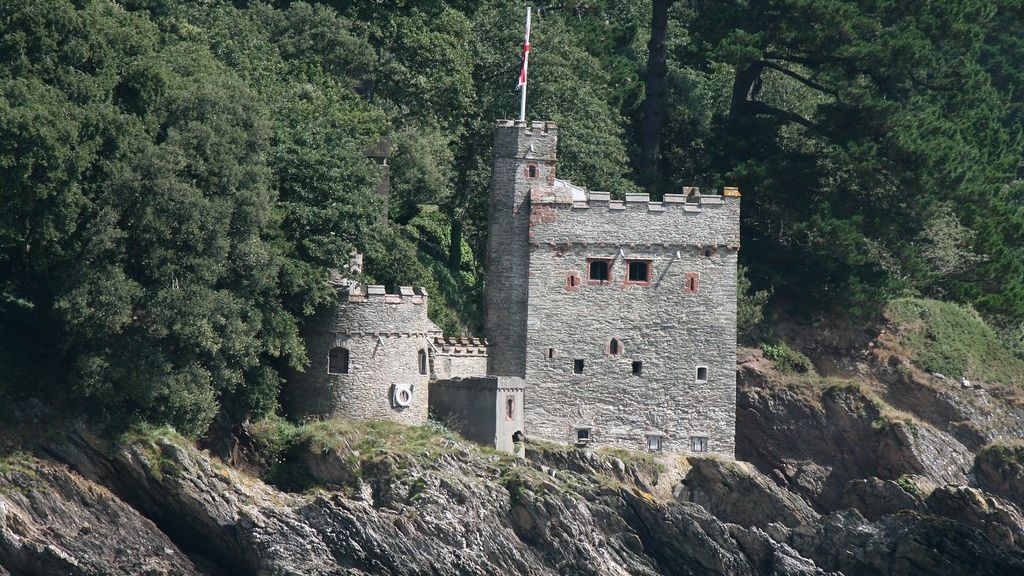History of Bayard’s Cove Fort
View of Bayard's Cove Fort from Dartmouth Castle, Dartmouth, Devon - by Glen Bowman
For anyone visiting South Devon, Bayard’s Cove Fort (formerly known as Berescove and Bearscore Castle) is one of the most magical attractions hidden in plain sight. Located on the banks of the River Dart close to Dartmouth Harbour, it has a history stretching back hundreds of years and is still a beloved feature of the town. One of the area’s last lines of defence, it has played an integral part in Dartmouth’s history since the Tudors and is a must-visit for history buffs of all generations.
For those looking to learn more about this waterside fort, read on to uncover its fascinating history and claims to fame.
Origins of Bayard’s Cove Fort
Bayard’s Cove Fort in Dartmouth was constructed in the early 16th century under the reign of Henry VIII. Though the exact date is unclear, the fort is believed to have been completed by 1536 (although possibly much earlier), nearly 150 years later than nearby Dartmouth Castle and over 30 years after Kingswear Castle.
Overlooking one of the narrowest points of the River Dart, Bayard’s Cove Fort’s naturally strategic position suggests that it was most likely built for defensive purposes. A mile along the river from Dartmouth Castle, it would have provided an invaluable final line of defence against any ships that had slipped past the town’s primary defensive outposts.
At the time the castle was built, King Henry VIII’s tumultuous relationship with the Catholic Church caused particularly strained relationships with Europe. With lingering fears of French or Spanish invasion, the king created dozens of these defensive coastal fortresses (‘device forts') at key stations all around the English and Welsh coastlines.
Built in a circular form, Bayard’s Cove Fort was constructed at the end of a quay along the harbour and was fitted with heavy guns to protect the trading port of Dartmouth from attack. Fortunately, the French and Spanish never did invade, although decades after the fort was built, authorities still ensured the building’s subsequent owners would relinquish control should they do so!
Pilgrim Fathers and the English Civil War
When Bayard’s Cove Fort in Dartmouth was originally built, the authorities’ most pressing concerns were related to European invasion following King Henry VIII’s split from the Catholic Church. That said, when the town did eventually come under siege, the ‘invaders’ were much local in origin – arriving not by sea from foreign territories, but by land from London.
Taking place between 1642 and 1651, the English Civil War consisted of a series of domestic conflicts between King Charles I and Parliament forces led by Oliver Cromwell. Eventually becoming England’s biggest national war, the English Civil War arose over differing views on major religious, political and economic policies.
During the war, Dartmouth declared allegiance to Parliament, but was taken over by Royalist forces after a month-long siege in 1643. Over the following two years, the Royalists fortified the town, including installing five iron artillery guns at Bayard’s Cove Fort. In 1646, the Royalists surrendered to Parliamentarian troops, thus ending the fort’s military usage until World War Two, when it was briefly used as a machine-gun post.
Interestingly, Bayards Cove in Dartmouth is also linked to the Pilgrim Fathers. Originally departing from Plymouth in 1620, The Mayflower and The Speedwell ships transporting pilgrims to America stopped off at Dartmouth not long after setting sail. This was to fix leaks in The Speedwell – a problem that would ultimately completely derail the ship’s 10-week voyage to America. Today, you can still find a plaque commemorating the pilgrims at Bayard’s Cove.
Restoration and Visiting Today
Following the end of the English Civil War, Bayard’s Cove Fort fell into disuse and disrepair over the years. This period of decline was particularly exaggerated during the 18th century, when the area surrounding the fort became a crowded and impoverished slum. In fact, this was one of the poorest places in England at the time.
Fortunately, both the town and the fort’s recovery began in 1863 when the Royal Naval College was established, and the rise in tourism made Dartmouth a sought-after coastal haven. Having largely been used for storage, Bayard’s Cove Fort was later salvaged from its state of neglect during World War Two, before eventually being given to English Heritage in 1984.
Still looked after by English Heritage today, Bayard’s Cove Fort plays an integral role in Dartmouth History. If you would like to visit, you can head over and visit the fort at “any reasonable time during daylight hours”. What’s more, entry is free for both English Heritage members and visitors alike.
Your Perfect Base for Exploration
If you can’t wait to learn about Dartmouth’s past and present in comfort and style, then make sure you book a welcoming base from which to enjoy your exploration. Only 3 miles away, at Leonards Cove we couldn’t be more perfectly placed for visiting Bayard’s Cove Fort and surrounding Dartmouth on foot or by car. As part of our stunning clifftop holiday village, we offer a range of camping and self-catering accommodation, complete with a range of superb facilities and breathtaking sea views.
Explore our collection and book your seaside retreat today.
